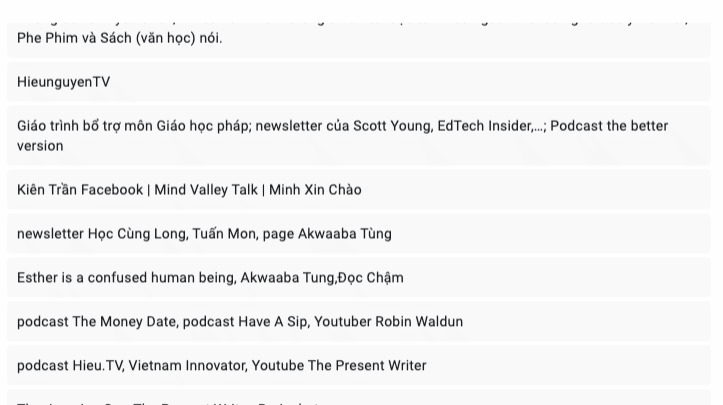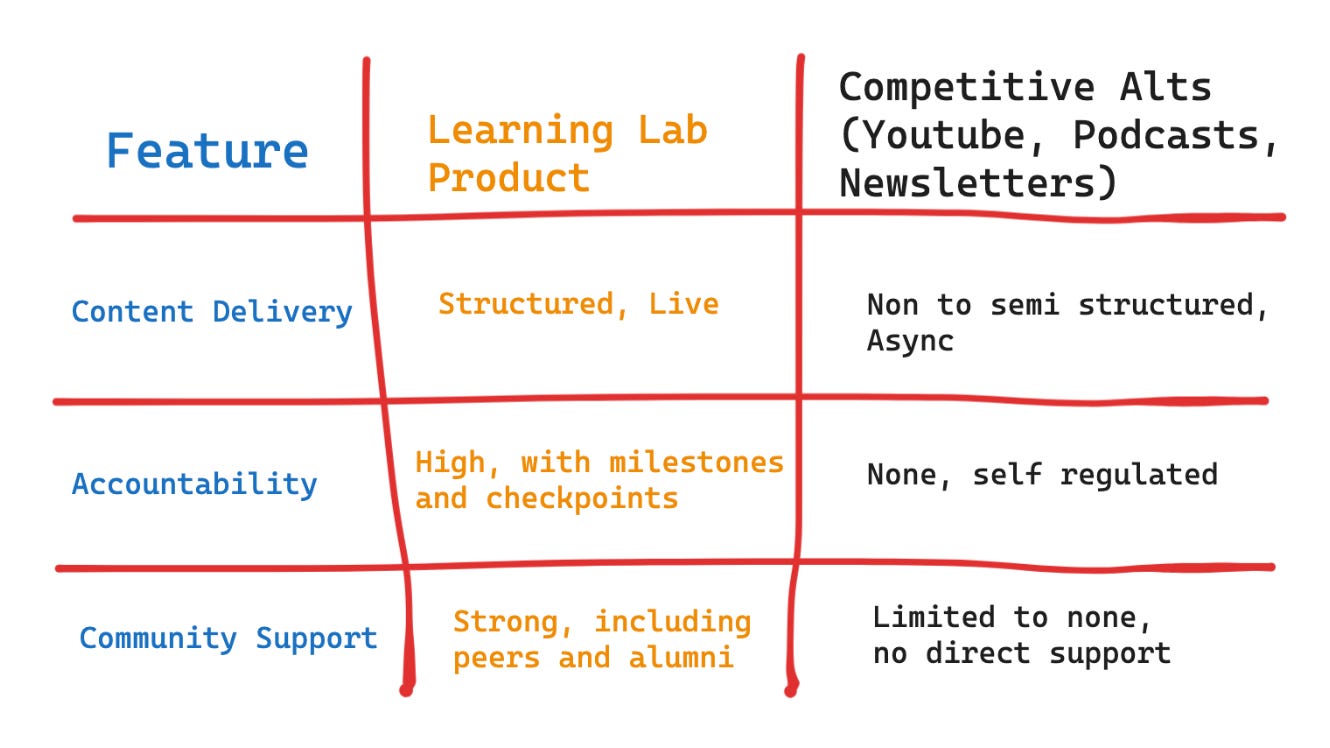Halo friends 👋 Hope you are well ❤️
Recently, I have been brainstorming on a new online learning product to solve problems in the learning market in Vietnam. I am learning how to best position our product so that we can (1) reach our target customers and (2) help them clearly understand the values that we provide.
Today, I would love to share a few best practices with you in my journey to build a better product. If you are building a product or a project from scratch, I think the concepts in this post might be quite useful!
In this post, I will share:
What is positioning?
What are the components of positioning?
What factors might lead to weak positioning?
Let's dive in!
I. What is positioning?
April Dunford, author of "Obviously Awesome: How to Nail Product Positioning so Customers Get It, Buy It, Love It", describes positioning as below:
Positioning defines how your product is a leader at delivering something that a well-defined set of customers cares a lot about.
In my opinion, positioning is the act of setting the context for your product in order to help your target customers understand why your product is best for them in the market. Positioning provides direction to all areas of the business, from developing to bringing the product to market.
Put simply, as I am building knowledge management courses at the moment, I need to ask myself why are my courses better? In what context are my courses better? Who are they better for?
II. What are the components of positioning?
In order to better understand how positioning works, let's dive into the specific components of positioning.
1. Competitive Alternatives
Key question: If you didn't exist, what would customers use?
This step doesn't mean you have to go on the Internet and look for all possible alternatives to your solution. It means understanding who your customers are and identifying what your customers see as alternatives.
You need to be an expert in the market that you operate in and help the customers choose the best solution that fits their needs.
So how have I gone about figuring out who the competitive alternatives are?
I am conducting market research to understand:
Which segment of the education market in Vietnam needs to manage its knowledge and cares about solving it?
What are their specific pains in managing their knowledge?
What solutions are they currently using to help them solve their pains?
It's important to really understand what customers compare your solutions with.
My initial approach to market research is to identify other e-learning 'products' in the market that are also solving problems in learning and knowledge management.
However, what I actually need to find out is the real alternative in the mind of a customer.
From the market research, I can see that people are consuming a lot of free content online around learning, personal development, and knowledge management.
So even if there are other similar courses in the market, what I am really competing with might be a YouTube video or a newsletter. You don't want to try to position yourself against competitors your customers never even consider.
If you are working a lot with knowledge for your study/work, you can participate in the market research to help me better understand your pains in learning and managing your knowledge at the moment.
2. Differentiated "Features" or "Capabilities"
Key question: What features/capabilities do you have that alternatives do not?
Once you have identified the competitive alternatives that your customers are using to solve their problems, you will consider the unique features/capabilities that you have.
For technology companies, these features/capabilities are often technical features but unique attributes could also be things like a delivery model, business model, or specific expertise. For service companies, unique attributes might be a combination of expertise and experience.
In my case, when I know that the competitive alternatives are different forms of online content, I will craft the things I can do that these alternatives can't, which will likely be a combination of expertise and experience.
Our expertise could be high-accountability (live and community-driven) learning experiences that will help learners achieve their learning goals much more effectively compared to watching videos on their own. Our experience could be our track records of 200+ students who have enrolled in our courses.
3. Value for Customers
Key question: What value do the attributes enable for customers?
Once you have identified the unique features/capabilities, you will consider what values these features/capabilities enable for your buyers.
If unique attributes are your secret sauce, then value is the reason why someone might care about your secret sauce.
I have briefly touched on the values above. Our unique attribute is high accountability which helps learners 3x, 5x, or 10x more likely to commit to their learning goals.
People might care about accountability because many of us are lazy and have no motivation to start and commit to our learning goals on our own.
Once we have identified our values, we need to ask ourselves, "Who cares about these values?"
4. Target Customer Segmentation
Key question: Who cares a lot about that value?
For consumer products, once you have an idea of a specific segment you want to target, you will identify customer personas which are specific characteristics of your consumers. For B2B products, a persona represents a specific team, department, or business. You should also consider the personas of multiple people on the sales team that you are selling to with B2B sales.
For a small business like mine where we don't have an unlimited marketing budget and a giant army of salespeople, our sales and marketing efforts have to be focused on the customers who are most likely to buy from us. Our positioning needs to clearly define who these people are. Simply put, they are the customers who care the most about the value that our product delivers.
In our case, who would pick high accountability learning experience over free content? What are the specific characteristics of them? How can I identify them?
5. Market Category
Key question: What context makes the value obvious to your target customers?
Customers need a way to make sense of the various number of products and solutions on the market. When they are presented with a new product, they will attempt to use what they know to try to figure out what it's all about.
For example, with MỞ, people will often ask me, "So are you an e-learning platform?", "Is it a video or live?", "What do you teach? English, STEM, IELTS?"
They will use phrases or keywords representing what they kind of know about the market to make sense of what you are.
Thus, for example, I would need to tell customers that my product is (1) an online course, (2) live, (3) in a time-bound community, and (4) about XYZ topics. The customers first need to understand that it's an online course, not just a video. Then, they will think about Zoom for online courses. Our job is to help them understand that we are not just like a normal Zoom online course. How are we different? Should we use the phrase "online course" then? Or whether we should use another phrase?
In the past, my team and I tested out with "online platform", "online experience", and "community-driven course". We were trying to create a new market category to differentiate ourselves. However, the downside to this strategy is that we have to make the category mean something in the customer's mind before it can serve as a meaningful context. So if we start out, it's better for us to position ourselves in an existing category until we have the money and momentum required to redraw the lines around that category.
It's okay if people think of Zoom when we position it as an online course, it's our job to show our customers how we are different.
III. What factors might lead to weak positioning?
1. Lack of alignment across teams
One of the most important causes leading to weak positioning is the lack of product alignment across teams. Positioning is a team effort and everyone on the team, especially when the product is young, needs to understand how we position our product - against who, why unique, so what, who cares, and in what context. Positioning will be embedded in every part of the business: from product development, brand positioning, and marketing messages, to sales pitch.
It's important for the founders and CEO to make sure everyone on the team is aligned on the product positioning before different teams execute their parts.
2. Lack of positioning flexibility
Positioning doesn't have to be fixed. We shouldn't stick with a 'default' positioning, even when the product changes or the market changes. This belief might happen because we haven’t been taught that every product can be positioned in multiple ways and often the best position for a product is not the default.
Positioning is a deliberate choice that requires time, attention, and a systematic process where we consistently revise its important components.
❌ Default positioning
✅ Deliberate positioning
IV. Conclusion
For me, positioning has been a very powerful mental model as it helps free me from always thinking about improving specific product features or attributes to grow. It helps me understand that the market can change and so can my product. Deliberately thinking about positioning means staying updated with the market and adapting to the market so that we can continue to help our customers make better decisions and continue bringing value to them. And of course, this process requires us to evaluate the way we see ourselves and how we can evolve with the market.
I hope you learn a few things about positioning in this post and maybe you can test it out in your project/venture.
You can check out these two videos below - references for my learning of this topic:)
If you like this post, you can consider filling out/sharing this market research survey to help me and my team identify the pains Vietnamese learners are facing in their learning process. It will only take you 5-10 minutes and you get access to free resources on highlighting and reading strategies at the end of the survey.
Many thanks 🫶






Boss 🙏🙏🙏
When are you talking to me for all your amazing ideas?